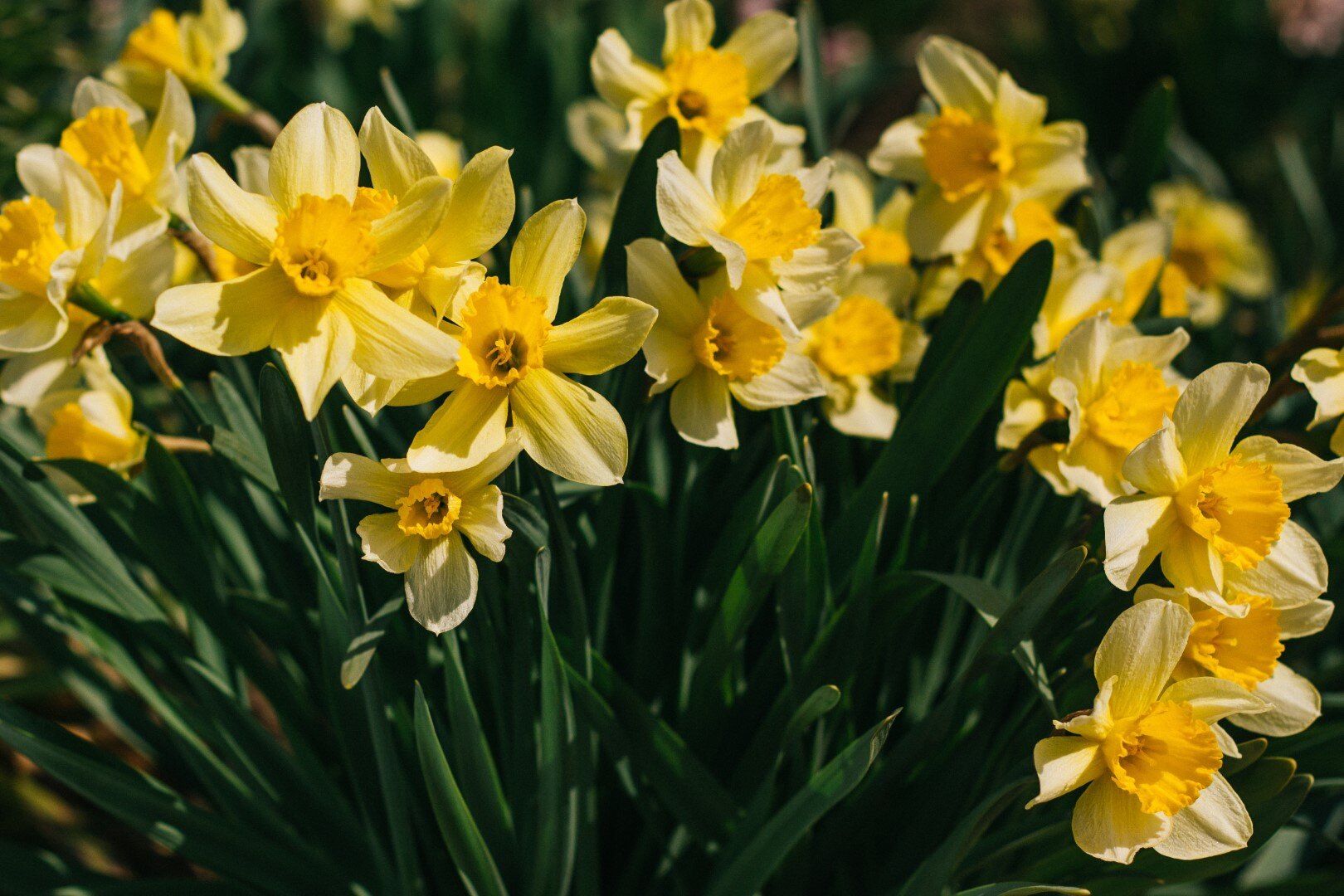
Flowering plants, also known as angiosperms, are a diverse and fascinating group of organisms that play a crucial role in the natural world. From vibrant garden blooms to towering trees, these plants captivate us with their beauty and contribute significantly to the ecological balance. In this article, we'll delve into 15 intriguing facts about flowering plants, shedding light on their evolutionary history, unique adaptations, and ecological significance. Whether you're a botany enthusiast, a nature lover, or simply curious about the plant kingdom, these facts will unveil the remarkable world of flowering plants in an engaging and informative manner. So, let's embark on a journey through the enchanting realm of angiosperms and uncover the hidden wonders that make these plants so vital to our planet's ecosystems.
Key Takeaways:
- Flowering plants, or angiosperms, are a diverse group of plants with captivating flowers that play a crucial role in ecosystems and human societies, inspiring awe and appreciation.
- The world of flowering plants, with over 300,000 different species, showcases nature’s creativity and resilience, from their evolutionary origins over 140 million years ago to their vital role in sustaining ecosystems and human societies.
Flowering plants are also known as angiosperms.
Flowering plants, also known as angiosperms, are the most diverse group of land plants. They are characterized by the presence of flowers, which are the reproductive structures responsible for producing seeds. With over 300,000 different species, flowering plants dominate the plant kingdom and play a crucial role in ecosystems worldwide. From towering trees to delicate wildflowers, the variety of flowering plants is truly remarkable.
The first flowering plants appeared over 140 million years ago.
The emergence of flowering plants transformed the landscape, bringing vibrant colors and diverse forms to the Earth's flora. Their rapid evolution and adaptation contributed to the spread of flowering plants across the globe, shaping the environments we know today.
Flowers have various shapes, sizes, and colors to attract pollinators.
Flowers have evolved a stunning array of shapes, sizes, and colors to attract pollinators such as bees, butterflies, birds, and bats. This remarkable adaptation ensures the successful transfer of pollen, facilitating the reproductive cycle of flowering plants.
The largest flower in the world is the Rafflesia arnoldii.
The Rafflesia arnoldii, also known as the "corpse flower," holds the title of the world's largest flower. This remarkable plant, native to the rainforests of Southeast Asia, can reach a diameter of up to three feet and emits a pungent odor akin to rotting flesh to attract pollinators.
Flowers can be unisexual or bisexual.
Flowers can be categorized as unisexual, containing either male or female reproductive organs, or bisexual, containing both male stamens and female pistils. This diversity in floral structure contributes to the complexity and adaptability of flowering plants.
The angiosperm life cycle consists of double fertilization.
The unique reproductive process of flowering plants involves double fertilization, where two sperm cells fertilize different nuclei within the ovule. This mechanism results in the formation of a zygote and endosperm, providing essential nutrients for the developing embryo.
Some flowering plants have coevolved with specific pollinators.
Certain flowering plants have developed intricate relationships with particular pollinators, leading to coevolution. For example, the long nectar tubes of certain orchids are specifically adapted to the proboscis length of their associated moth pollinators, showcasing the fascinating interplay between plants and animals.
Flowering plants play a vital role in food production.
Many of the world's staple crops, including rice, wheat, and fruits, are derived from flowering plants. Their agricultural significance underscores the indispensable role of angiosperms in sustaining human populations and global food security.
The Amazon rainforest is home to an astonishing diversity of flowering plants.
The Amazon rainforest, renowned for its unparalleled biodiversity, harbors an astounding array of flowering plant species. This rich botanical tapestry contributes to the Amazon's status as a global treasure trove of plant life.
Flowers have been revered in various cultures and traditions.
Throughout history, flowers have held symbolic and cultural significance, inspiring art, literature, and traditions across diverse societies. Their beauty and ephemeral nature have captivated human imagination and emotions for millennia.
Flowering plants have adapted to diverse habitats, from arid deserts to icy tundras.
The adaptability of flowering plants is evident in their ability to thrive in a wide range of environments, including deserts, grasslands, forests, and alpine regions. This resilience reflects the evolutionary success of angiosperms in colonizing diverse ecological niches.
The study of flowering plants is known as angiospermology.
The scientific discipline dedicated to the study of flowering plants, their classification, and evolutionary history is known as angiospermology. This field encompasses a broad spectrum of research, from molecular genetics to ecological interactions, shedding light on the intricate world of angiosperms.
Some flowering plants have medicinal properties.
Numerous flowering plants have been utilized in traditional medicine for their therapeutic properties. From the calming effects of chamomile to the potent compounds of the Madagascar periwinkle, these plants have contributed to the development of essential medications.
Climate change poses challenges to flowering plant populations.
The impact of climate change on flowering plants is a growing concern, with shifting temperatures and precipitation patterns affecting their distribution and reproductive cycles. Conservation efforts and research are crucial in mitigating the threats posed to these vital components of terrestrial ecosystems.
The beauty of flowering plants continues to inspire horticulture and gardening enthusiasts.
The allure of flowering plants transcends their ecological importance, as they adorn gardens and landscapes with a kaleidoscope of colors and fragrances. Horticultural practices and breeding programs further enhance the diversity and resilience of cultivated flowering plants, enriching human surroundings with natural splendor.
Flowering plants, or angiosperms, encompass a fascinating and diverse group of botanical wonders. From their evolutionary origins over 140 million years ago to their vital role in sustaining ecosystems and human societies, the world of flowering plants is a testament to nature's creativity and resilience. Their captivating flowers, intricate reproductive mechanisms, and cultural significance continue to inspire awe and appreciation, underscoring the enduring impact of angiosperms on our planet.
Conclusion
In conclusion, flowering plants, also known as angiosperms, are an essential and fascinating part of the Earth's ecosystem. They play a crucial role in providing food, medicine, and aesthetic beauty to our world. Understanding the unique characteristics and life cycle of flowering plants can deepen our appreciation for the natural world and inspire us to protect and preserve these vital organisms. From their diverse reproductive strategies to their coevolution with pollinators, flowering plants showcase the wonders of nature in captivating ways. As we continue to explore and study these remarkable organisms, we uncover new insights that enrich our understanding of life on our planet.
FAQs
Why are flowering plants important?Flowering plants are vital to the ecosystem as they provide food for humans and animals, contribute to oxygen production, and offer medicinal benefits. Additionally, they enhance the aesthetic appeal of the environment.
How do flowering plants reproduce?Flowering plants reproduce through a process called pollination, where pollen from the male reproductive organs is transferred to the female reproductive organs, leading to the formation of seeds within the ovary. This process can occur through various methods, including wind, insects, birds, and other animals.
Flowering plants never cease to amaze with their incredible adaptations and vital roles in ecosystems worldwide. From the stunning beauty of peacock flowers to the intriguing characteristics of hesperis and the mesmerizing allure of peacock orchids, there's always more to learn about these fascinating organisms. Dive deeper into the world of angiosperms by exploring surprising facts about peacock flowers, astounding details about hesperis, and mind-blowing truths about peacock orchids. Each article offers a unique perspective on the captivating realm of flowering plants, promising to delight and inform readers with every turn of the page.
Was this page helpful?
Our commitment to delivering trustworthy and engaging content is at the heart of what we do. Each fact on our site is contributed by real users like you, bringing a wealth of diverse insights and information. To ensure the highest standards of accuracy and reliability, our dedicated editors meticulously review each submission. This process guarantees that the facts we share are not only fascinating but also credible. Trust in our commitment to quality and authenticity as you explore and learn with us.


